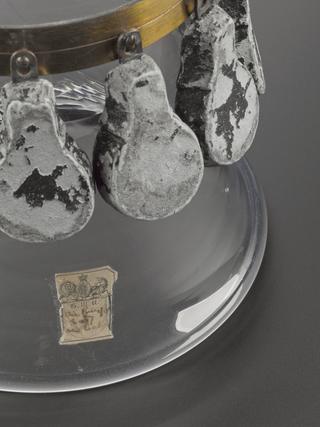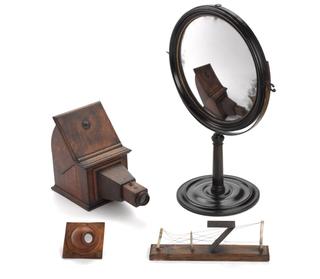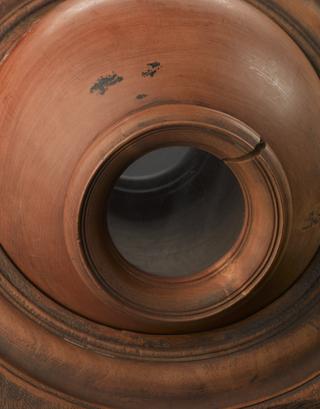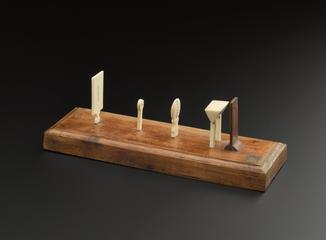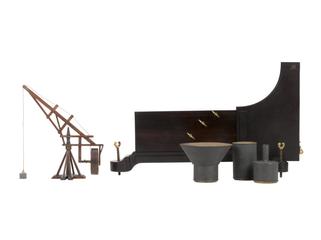
Model of Halley's diving bell
- inventor:
- Edmond Halley





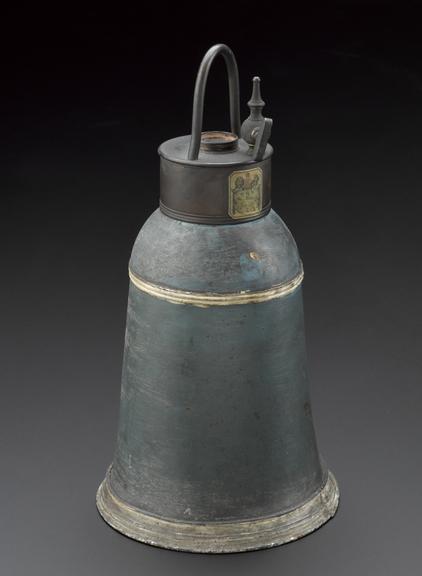
Model Halley's diving bell
Model diving bell of Halley's diving bell. Made of tinplate and painted with a brass stopcock and loop for a rope at the top. The barrels are not present. A simple diving bell could not provide fresh air to sustain the driver beyond a few minutes. Edmond Halley (), who owned a diving company which salvaged shipping wrecks in the first half of the eighteenth century, devised a system whereby fresh air was sent down in barrels to replenish the bell and the used air was let out via a stopcock. The bell was shaped like a truncated cone and had strong, clear glass in the top to let in light. J T Desaguliers (1683-1744), a lecturer in natural philosophy, modified this to a meniscus lens which is what is present in the model. Halley's improvements revolutionized the 'Art of Living under Water', a lecture which formed an important part of a course given by Stephen Demainbray (1710-1782), a famous lecturer and superintendent of King George III's observatory at Richmond, Surrey, England.
Details
- Category:
- King George III
- Object Number:
- 1927-1452
- Measurements:
-
overall: 355 mm x 180 mm diameter, 0.8 kg
- type:
- diving bell and model
- copyright:
- Unlinked Name
- credit:
- King's College, London
